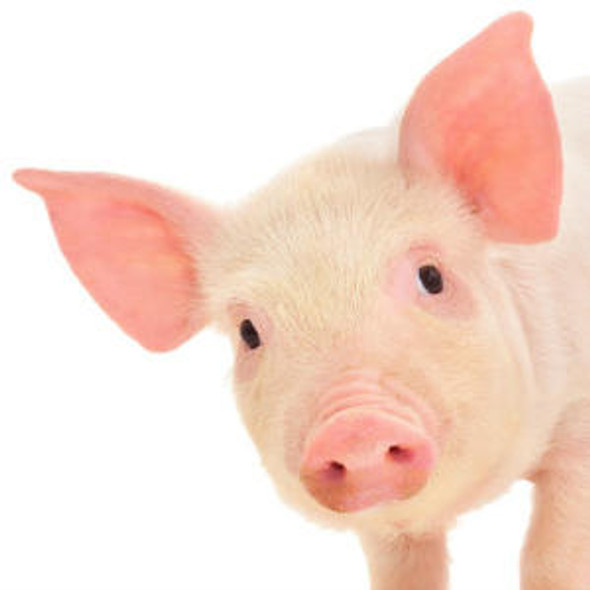Human Cell Biology ELISA Kits 5
Human BGN (Biglycan) CLIA Kit (HUES01040)
- SKU:
- HUES01040
- Product Type:
- ELISA Kit
- ELISA Type:
- CLIA Kit
- Size:
- 96 Assays
- Sensitivity:
- 37.5pg/mL
- Range:
- 62.5-4000pg/mL
- ELISA Type:
- Sandwich
- Reactivity:
- Human
- Sample Type:
- Serum, plasma and other biological fluids
- Research Area:
- Cell Biology
Description
| Assay type: | Sandwich |
| Format: | 96T |
| Assay time: | 4.5h |
| Reactivity: | Human |
| Detection method: | Chemiluminescence |
| Detection range: | 62.50-4000 pg/mL |
| Sensitivity: | 37.50 pg/mL |
| Sample volume: | 100µL |
| Sample type: | Serum, plasma and other biological fluids |
| Repeatability: | CV < 15% |
| Specificity: | This kit recognizes Human BGN in samples. No significant cross-reactivity or interference between Human BGN and analogues was observed. |
This kit uses Sandwich-CLIA as the method. The micro CLIA plate provided in this kit has been pre-coated with an antibody specific to Human BGN. Standards or samples are added to the appropriate micro CLIA plate wells and combined with the specific antibody. Then a biotinylated detection antibody specific for Human BGN and Avidin-Horseradish Peroxidase (HRP) conjugate are added to each micro plate well successively and incubated. Free components are washed away. The substrate solution is added to each well. Only those wells that contain Human BGN, biotinylated detection antibody and Avidin-HRP conjugate will appear fluorescence. The Relative light unit (RLU) value is measured spectrophotometrically by the Chemiluminescence immunoassay analyzer. The RLU value is positively associated with the concentration of Human BGN. The concentration of Human BGN in the samples can be calculated by comparing the RLU of the samples to the standard curve.
| UniProt Protein Function: | BGN: May be involved in collagen fiber assembly. Belongs to the small leucine-rich proteoglycan (SLRP) family. SLRP class I subfamily. |
| UniProt Protein Details: | Protein type:Secreted; Secreted, signal peptide Chromosomal Location of Human Ortholog: Xq28 Cellular Component: extracellular matrix; proteinaceous extracellular matrix; lysosomal lumen; transport vesicle; cell surface; Golgi lumen; extracellular region; sarcolemma Molecular Function:glycosaminoglycan binding; extracellular matrix binding; extracellular matrix structural constituent Biological Process: chondroitin sulfate metabolic process; extracellular matrix organization and biogenesis; chondroitin sulfate biosynthetic process; glycosaminoglycan metabolic process; carbohydrate metabolic process; chondroitin sulfate catabolic process; pathogenesis; blood vessel remodeling; peptide cross-linking via chondroitin 4-sulfate glycosaminoglycan; dermatan sulfate biosynthetic process |
| NCBI Summary: | The protein encoded by this gene is a small cellular or pericellular matrix proteoglycan that is closely related in structure to two other small proteoglycans, decorin and fibromodulin. The encoded protein and decorin are thought to be the result of a gene duplication. Decorin contains one attached glycosaminoglycan chain, while this protein probably contains two chains. For this reason, this protein is called biglycan. This protein plays a role in assembly of collagen fibrils and muscle regeneration. It interacts with several proteins involved in muscular dystrophy, including alpha-dystroglycan, alpha- and gamma-sarcoglycan and collagen VI, and it is critical for the assembly of the dystrophin-associated protein complex. [provided by RefSeq, Nov 2009] |
| UniProt Code: | P21810 |
| NCBI GenInfo Identifier: | 266762 |
| NCBI Gene ID: | 633 |
| NCBI Accession: | P21810. 2 |
| UniProt Secondary Accession: | P21810,P13247, D3DWU3, |
| UniProt Related Accession: | P21810 |
| Molecular Weight: | 368 |
| NCBI Full Name: | Biglycan |
| NCBI Synonym Full Names: | biglycan |
| NCBI Official Symbol: | BGN |
| NCBI Official Synonym Symbols: | PGI; DSPG1; PG-S1; SLRR1A |
| NCBI Protein Information: | biglycan; biglycan proteoglycan; bone/cartilage proteoglycan I; bone/cartilage proteoglycan-I; small leucine-rich protein 1A; dermatan sulphate proteoglycan I |
| UniProt Protein Name: | Biglycan |
| UniProt Synonym Protein Names: | Bone/cartilage proteoglycan I; PG-S1 |
| Protein Family: | Biglycan |
| UniProt Gene Name: | BGN |
| UniProt Entry Name: | PGS1_HUMAN |
As the RLU values of the standard curve may vary according to the conditions of the actual assay performance (e. g. operator, pipetting technique, washing technique or temperature effects), the operator should establish a standard curve for each test. Typical standard curve and data is provided below for reference only.
| Concentration (pg/mL) | RLU | Average | Corrected |
| 4000 | 55706 62456 | 59081 | 59046 |
| 2000 | 26787 28931 | 27859 | 27824 |
| 1000 | 13493 13475 | 13484 | 13449 |
| 500 | 6248 6962 | 6605 | 6570 |
| 250 | 3355 3131 | 3243 | 3208 |
| 125 | 1699 1463 | 1581 | 1546 |
| 62.50 | 740 770 | 755 | 720 |
| 0 | 34 36 | 35 | -- |
Precision
Intra-assay Precision (Precision within an assay): 3 samples with low, mid range and high level Human BGN were tested 20 times on one plate, respectively.
Inter-assay Precision (Precision between assays): 3 samples with low, mid range and high level Human BGN were tested on 3 different plates, 20 replicates in each plate.
| Intra-assay Precision | Inter-assay Precision | |||||
| Sample | 1 | 2 | 3 | 1 | 2 | 3 |
| n | 20 | 20 | 20 | 20 | 20 | 20 |
| Mean (pg/mL) | 210.38 | 635.83 | 1869.21 | 190.72 | 672.44 | 2009.47 |
| Standard deviation | 17.31 | 50.68 | 157.01 | 16.52 | 68.93 | 177.84 |
| C V (%) | 8.23 | 7.97 | 8.40 | 8.66 | 10.25 | 8.85 |
Recovery
The recovery of Human BGN spiked at three different levels in samples throughout the range of the assay was evaluated in various matrices.
| Sample Type | Range (%) | Average Recovery (%) |
| Serum (n=5) | 101-115 | 107 |
| EDTA plasma (n=5) | 101-116 | 108 |
| Cell culture media (n=5) | 100-117 | 107 |
Linearity
Samples were spiked with high concentrations of Human BGN and diluted with Reference Standard & Sample Diluent to produce samples with values within the range of the assay.
| Serum (n=5) | EDTA plasma (n=5) | Cell culture media (n=5) | ||
| 1:2 | Range (%) | 87-99 | 95-109 | 87-102 |
| Average (%) | 92 | 100 | 94 | |
| 1:4 | Range (%) | 90-103 | 92-108 | 98-115 |
| Average (%) | 96 | 100 | 105 | |
| 1:8 | Range (%) | 87-100 | 95-108 | 94-109 |
| Average (%) | 92 | 100 | 102 | |
| 1:16 | Range (%) | 88-101 | 94-108 | 97-112 |
| Average (%) | 95 | 100 | 104 |
An unopened kit can be stored at 4°C for 1 month. If the kit is not used within 1 month, store the items separately according to the following conditions once the kit is received.
| Item | Specifications | Storage |
| Micro CLIA Plate(Dismountable) | 8 wells ×12 strips | -20°C, 6 months |
| Reference Standard | 2 vials | |
| Concentrated Biotinylated Detection Ab (100×) | 1 vial, 120 µL | |
| Concentrated HRP Conjugate (100×) | 1 vial, 120 µL | -20°C(shading light), 6 months |
| Reference Standard & Sample Diluent | 1 vial, 20 mL | 4°C, 6 months |
| Biotinylated Detection Ab Diluent | 1 vial, 14 mL | |
| HRP Conjugate Diluent | 1 vial, 14 mL | |
| Concentrated Wash Buffer (25×) | 1 vial, 30 mL | |
| Substrate Reagent A | 1 vial, 5 mL | 4°C (shading light) |
| Substrate Reagent B | 1 vial, 5 mL | 4°C (shading light) |
| Plate Sealer | 5 pieces | |
| Product Description | 1 copy | |
| Certificate of Analysis | 1 copy |
- Set standard, test sample and control (zero) wells on the pre-coated plate and record theirpositions. It is recommended to measure each standard and sample in duplicate. Note: addall solutions to the bottom of the plate wells while avoiding contact with the well walls. Ensuresolutions do not foam when adding to the wells.
- Aliquot 100 µL of standard solutions into the standard wells.
- Add 100 µL of Sample / Standard dilution buffer into the control (zero) well.
- Add 100 µL of properly diluted sample (serum, plasma, tissue homogenates and otherbiological fluids. ) into test sample wells.
- Cover the plate with the sealer provided in the kit and incubate for 90 min at 37 °C.
- Aspirate the liquid from each well, do not wash. Immediately add 100 µL of BiotinylatedDetection Ab working solution to each well. Cover the plate with a plate seal and gently mix. Incubate for 1 hour at 37 °C.
- Aspirate or decant the solution from the plate and add 350 µL of wash buffer to each welland incubate for 1-2 minutes at room temperature. Aspirate the solution from each well andclap the plate on absorbent filter paper to dry. Repeat this process 3 times. Note: a microplatewasher can be used in this step and other wash steps.
- Add 100 µL of HRP Conjugate working solution to each well. Cover with a plate seal andincubate for 30 min at 37 °C.
- Aspirate or decant the solution from each well. Repeat the wash process for five times asconducted in step 7.
- Add 100 µL of Substrate mixture solution to each well. Cover with a new plate seal andincubate for no more than 5 min at 37 °C. Protect the plate from light.
- Determine the RLU value of each well immediately.






